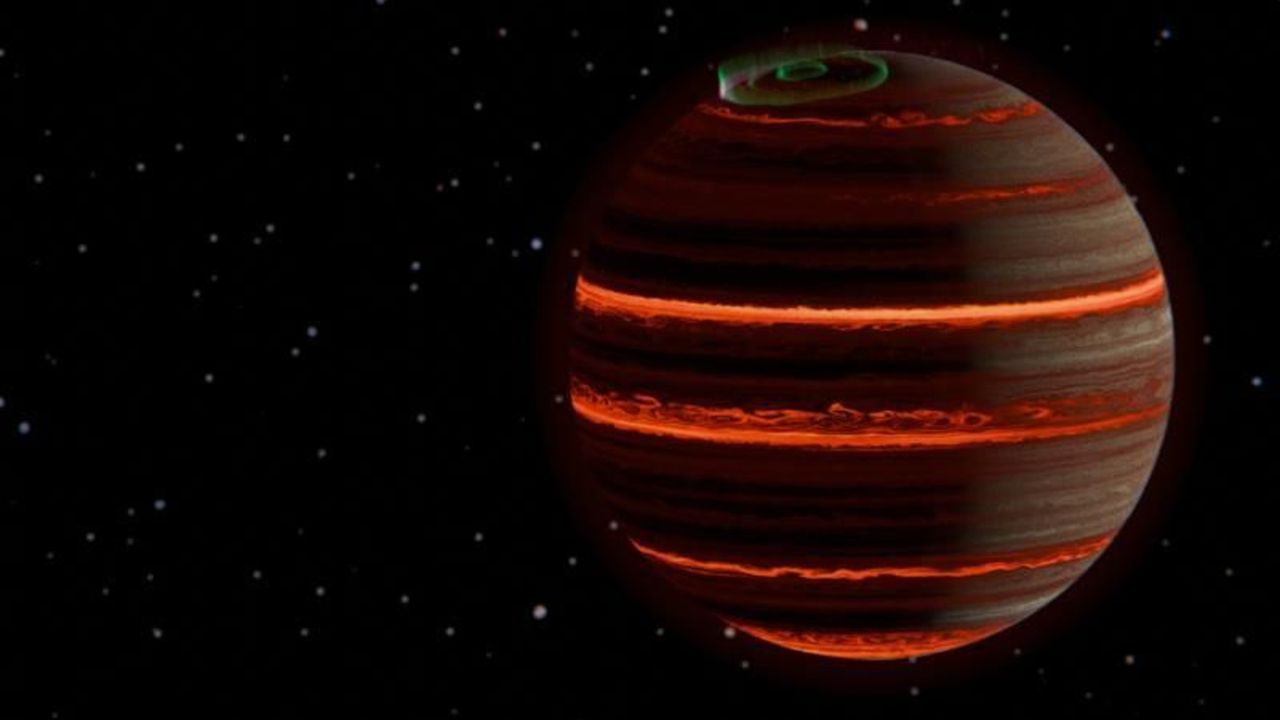Astronomers have achieved a groundbreaking milestone with the James Webb Space Telescope (JWST), delivering the first detailed weather report for a rogue world known as SIMP-0136. Located approximately 20 light-years away in the constellation Pisces, this unique celestial body is classified as a brown dwarf, often referred to as a “failed star.” Unlike typical planets, SIMP-0136 does not orbit a sun and completes a rotation every two and a half hours.
The study, published on September 26, 2023, in the journal Astronomy & Astrophysics, marks a significant advancement in our understanding of atmospheric dynamics beyond our solar system. Researchers tracked minute changes in the atmosphere of SIMP-0136 as it rotated, revealing insights into temperature variations, chemical compositions, and cloud structures.
Evert Nasedkin, the lead author of the study from Trinity College Dublin, emphasized the significance of these findings, stating, “These are some of the most precise measurements of the atmosphere of any extra-solar object to date, and the first time that changes in the atmospheric properties have been directly measured.” Co-author Johanna Vos added that understanding these weather processes is crucial for future explorations of exoplanets.
The JWST’s advanced instruments captured subtle fluctuations in brightness, enabling scientists to map the atmospheric layers of this distant world. Initially, astronomers suspected that the flickering light was due to irregular cloud formations. However, the findings revealed that the clouds, composed of sand-like grains of hot silicates, are surprisingly stable.
The most striking discovery was a layer of air in SIMP-0136’s atmosphere that is nearly 570 degrees Fahrenheit (300 degrees Celsius) warmer than previously predicted models. This unexpected heat is likely attributed to the presence of auroras. On Earth, auroras create stunning light displays when charged particles from the solar wind interact with the magnetic field. In the case of SIMP-0136, a significantly stronger magnetic field intensifies this phenomenon, causing charged particles to collide with the atmosphere, generating both light and additional heat.
The JWST also detected slight temperature fluctuations of less than 40 degrees Fahrenheit (5 degrees Celsius) in the deeper atmospheric layers. Such minor changes may indicate the presence of massive storm systems, akin to Jupiter’s Great Red Spot, as they traverse the surface of the brown dwarf.
Brown dwarfs like SIMP-0136 provide an ideal opportunity for studying the atmospheric behavior of exoplanets that orbit distant stars. By examining the weather patterns of these objects, astronomers can gain insights into the atmospheres of exoplanets. The techniques developed through this research could be applied to future studies of worlds orbiting distant suns, particularly with the help of upcoming observatories such as the Extremely Large Telescope and NASA’s planned Habitable Worlds Observatory.
The findings from this study represent a vital step forward in our exploration of exoplanets and their atmospheric conditions, paving the way for further discoveries in the vastness of space. As researchers continue to analyze the data gathered by the JWST, they hope to unlock more secrets about the weather patterns of worlds beyond our own.







































































